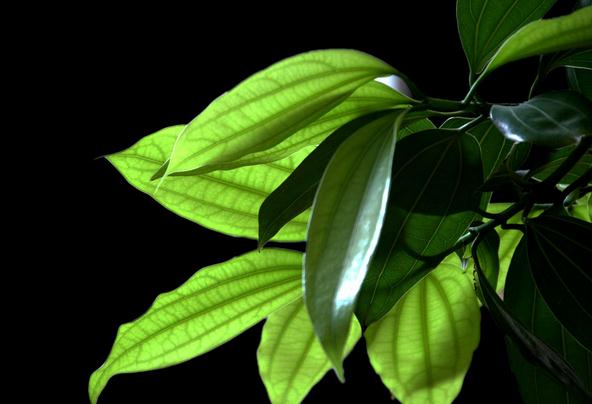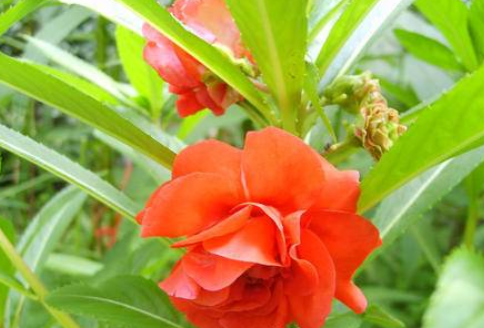Analysis and treatment of Disease symptoms of Ping an Tree
Disease Analysis of Ping an Tree
I. anthrax
1. Symptoms
It mainly harms the leaves of seedling and adult plants. Leaf infection, mostly occurs in the leaf surface, leaf tip, leaf edge, brown, irregular shape, in the later stage often expand or merge into gray-brown spots, the edge of brown, wavy, there are many small black spots on the spot, that is, its conidial disk. Conidia are transmitted by wind and rain, and spore germination invades leaves or seedlings when humidity is high, which is easy to occur in continuous rain, lack of sunlight, soil viscosity or moisture retention in the shed, and is the most popular from February to April.

2. Prevention and control methods
Find a small number of diseased leaves, remove and destroy them in time; increase the application of phosphorus and potassium fertilizer in the growing season to improve plant resistance; at the initial stage of the disease, use 25% carbendazim wettable powder 500 times, or 60% carbolin wettable powder 700 times, or 75% methyl topiramate 600 times, spray alternately, every 10-15 days, 3-4 times in a row.
2. Brown spot
1. Symptoms
It occurred on the new leaves of the plant from April to May, and the oval yellow-brown disease spot began to appear on the leaf surface, and then expanded continuously, and there were more small black grains in the disease spot on the front of the leaf, and the back of the disease spot was purple, so that the whole leaf yellowed and withered, so that the plant had a large number of fallen leaves.
2. Prevention and control methods
1% Bordeaux solution can be used for prevention; a small number of diseased leaves should be removed and burned in time; at the initial stage of the disease, 50% carbendazim wettable powder or 50% carbendazim wettable powder 1000 times, or 50% fungicide aqua regia 1000 times, alternately sprayed every 10 days, 3-4 times in a row.
Brown root disease
1. Symptoms
The leaves of diseased trees gradually turn yellow and droop, turn brown and dry up in severe cases, the stems lose water and dry up, the roots turn brown and rot, and the diseased plants die in a short time. Diseased roots, diseased soil and residual plants left behind are the initial infection sources of the disease, which are transmitted by wind, rain or contact, usually occurring in a single plant.
2. Prevention and control methods
Seriously diseased plants and plants withered due to disease should be uprooted and burned, and disinfected with 50% carbendazim wettable powder 600 times; at the initial stage of the disease, 50% carbendazim methyl, 800 times sulfur suspension, or 50% carbendazim 800 times wettable powder should be sprayed for prevention and treatment.
Leaf blight
1. Symptoms
Primary dark brown dots, and then expand into oval or irregular disease spots, grayish white, edges wavy, dark brown. In severe cases, the leaves dry and fall off, and there are many small black spots on the disease spot, that is, the conidium of the pathogen.
2. Pathogen
Phomopsis cinnamomiS.M.Linet P.K.Chi called Cinnamomum cinnamomum, a half-known fungal fungus. Conidium leaf surface, punctate, scattered, late breakthrough epidermis exposed, dark brown, triangular to oblate, single cavity, with papillary orifice, 150-300 × 100-150 (μ m). Conidiophores slender, branched, colorless; sporogenic cells bottle pedicel type, inner wall budding; A conidia elliptic or cylindrical, with 2 oil balls, colorless unicellular, 5-7 × 1.2-2.9 (μ m); B conidia linear, colorless, unicellular, curved, 16-22 × 0.7-1.0 (μ m).
3. the route of transmission and the condition of the disease.
The pathogen survived in the diseased part with mycelium and meristematic embracing apparatus, and invaded the leaves in the following year when the conditions were suitable, causing the disease.
4. Prevention and control methods
① removed the residual body in time in order to reduce the source of primary infection.
At the beginning of ②, spray 40% chlorothalonil suspension 500x or 50% chlorothalonil suspension (Shuntianxing 2) 500x600x (Beijing Shunyi Pesticide Factory), 50% carbendazim 'sulfur suspension 800x, 27% copper noble suspension or 12% green copper EC 600x, 20% Longke suspension 500x.
Time: 2019-04-16 Click:
- Prev

How to deal with the rotten root of impatiens? how to deal with the rotten root of impatiens?
Impatiens rotten roots, maintenance of flowers, need good ventilation, need suitable light, need moderate temperature. If the summer heat season, catch up with the rain after the muggy, do not give impatiens good ventilation, the root system is extremely easy to rot. Impatiens likes sunshine, is afraid of humidity, is heat-resistant and not cold-resistant, and is suitable for growing in loose, fertile and slightly acidic soil.
- Next

Fertilization time and method of Bletilla striata
Fertilization time and method of Bletilla striata
Related
- Fuxing push coffee new agricultural production and marketing class: lack of small-scale processing plants
- Jujube rice field leisure farm deep ploughing Yilan for five years to create a space for organic food and play
- Nongyu Farm-A trial of organic papaya for brave women with advanced technology
- Four points for attention in the prevention and control of diseases and insect pests of edible fungi
- How to add nutrient solution to Edible Fungi
- Is there any good way to control edible fungus mites?
- Open Inoculation Technology of Edible Fungi
- Is there any clever way to use fertilizer for edible fungus in winter?
- What agents are used to kill the pathogens of edible fungi in the mushroom shed?
- Rapid drying of Edible Fungi

